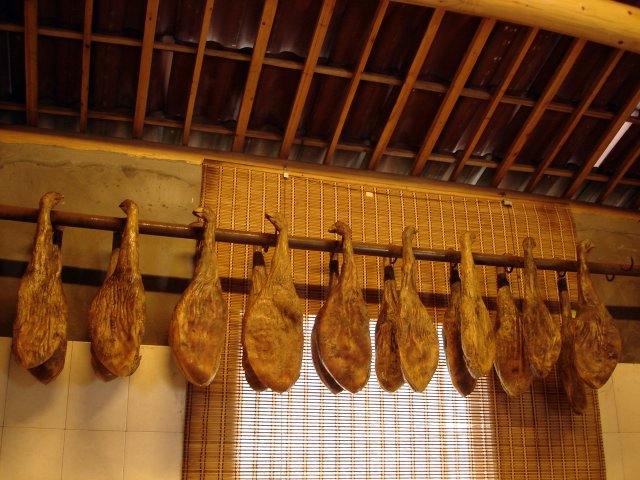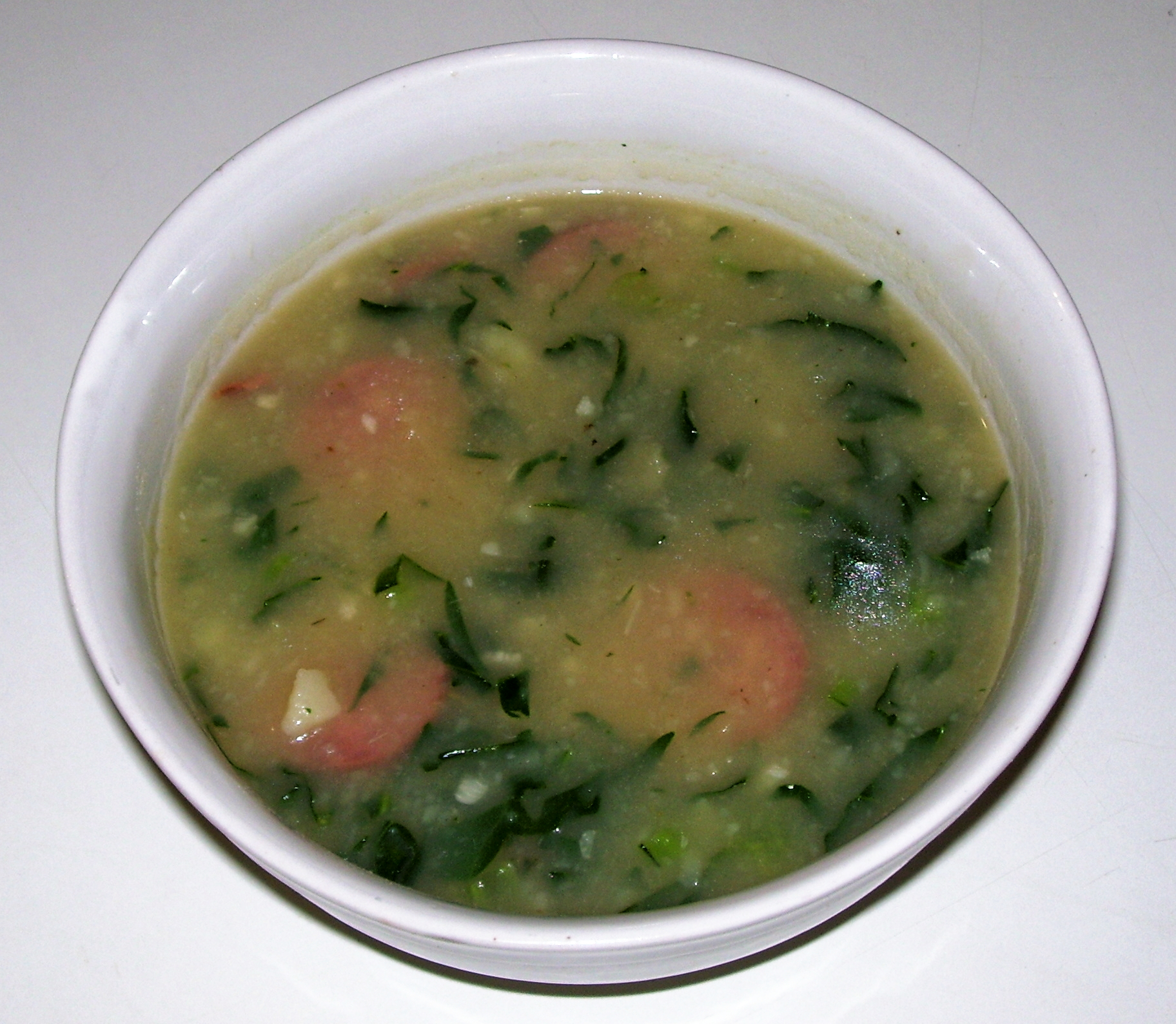|
Presunto Doce
''Presunto'' () is dry-cured ham from Portugal, similar to Italian prosciutto or Spanish ''jamón''. Among the wide variety of ''presuntos'' in Portugal, the most famous are ''presunto'' from Chaves, produced in the north of Portugal, and that from the Alentejo, in the south, made from local Alentejano pigs. Several varieties of ''presunto'' are protected by European law with geographical indications. Etymology The word is from Vulgar Latin past participle ''persunctus'', ultimately from the verb ''sugo'', 'to suck', and is unrelated to identical words in Italian and Spanish coming from the also past participle ''praesumptus'', ultimately from ''sumo'', 'to (under)take, occupy' (see wikt:presunto). ''Presunto'' PDO and IGP In March 2014, six varieties of ''presunto'' were protected by European law registered with protected designation of origin: * ''Presunto de Barrancos'' (PGO) *''Presunto do Alentejo'' and ''Paleta do Alentejo'' (PDO) * ''Presunto de Barroso'' (PGI) * '' ... [...More Info...] [...Related Items...] OR: [Wikipedia] [Google] [Baidu] |
Protected Designation Of Origin
The protected designation of origin (PDO) is a type of geographical indication of the European Union aimed at preserving the designations of origin of food-related products. The designation was created in 1992 and its main purpose is to designate products that have been produced, processed and developed in a specific geographical area, using the recognized know-how of local producers and ingredients from the region concerned. Features The characteristics of the products protected are essentially linked to their terroir. The European or UK PDO logo, of which the use is compulsory, documents this link. European Regulation 510/2006 of 20 March 2006 acknowledges a priority to establish a community protection system that ensures equal conditions of competition between producers. This European Regulation is intended to guarantee the reputation of regional products, adapt existing national protections to make them comply with the requirements of the World Trade Organization, and info ... [...More Info...] [...Related Items...] OR: [Wikipedia] [Google] [Baidu] |
Dried Meat
Dried meat is a feature of many cuisines around the world. Examples include: * Kulen Slanina Pečenica * Aliya, sun-dried meat from Kenya * Bakkwa or rougan, Chinese salty-sweet dried meat sheets. * Biltong, a cured meat that originated in Southern Africa. * ''Bògoǫ'', a dried and smoked meat, often caribou, of the Dené people of northern Canada. * Borts, air-dried strips of horse or cow meat used as traveling food or to last the winter in Mongolia. Often ground into powder and mixed with water to create soup. * Bresaola, air-dried salted beef originally from the Valtellina valley in northern Italy. * Brési, made in the canton of Jura and in Jura Bernois in Switzerland and in the department of Doubs in France. * Bündnerfleisch, air-dried meat from Kanton Graubünden in Switzerland. * Carne-de-sol, sun-dried salt beef from Brazil. * Carne seca, air-dried meat from Mexico. * Cecina, lightly smoked, dried, and salted meat from northwestern Spain (Asturias, León, ... [...More Info...] [...Related Items...] OR: [Wikipedia] [Google] [Baidu] |
Lunch Meat
Lunch meats—also known as cold cuts, luncheon meats, cooked meats, sliced meats, cold meats, sandwich meats, delicatessens, and deli meats—are precooked or cured meats that are sliced and served cold or hot. They are typically served in sandwiches or on a tray. They can be purchased canned, pre-sliced (usually in vacuum packs), or they can be sliced to order, most often in delicatessens and charcuteries. Lunch meats are processed meats designed for convenience. The preservatives added to extend the shelf life have been increasingly scrutinized due to potential links to certain diseases. In the US, '' Listeria'' infection is possible and has resulted in additional guidelines from the CDC for the elderly. Types * Bresaola * Chicken breast * Chicken loaf (also known as chicken roll) * Corned beef * Cotechino * Dutch loaf * Ham ** Baked ** Boiled ** Chipped chopped ** Cooked ** ''Éisleker'' ** '' Jamón'': ''serrano'' or ''ibérico'' ** Presunto ** Pr ... [...More Info...] [...Related Items...] OR: [Wikipedia] [Google] [Baidu] |
List Of Dried Foods
This is a list of dried foods. Food drying is a method of food preservation that works by removing water from the food, which inhibits the growth of bacteria and has been practiced worldwide since ancient times to preserve food. Where or when dehydration as a food preservation technique was invented has been lost to time, but the earliest known practice of food drying is 12000 BC by inhabitants of the modern Middle East and Asia."Historical Origins of Food Preservation". Accessed June 2011. Dried foods Processed foods B * Baker's yeastused as a[...More Info...] [...Related Items...] OR: [Wikipedia] [Google] [Baidu] |
List Of Hams
This is a list of notable hams and ham products. Ham is pork that has been food preservation, preserved through Salting (food), salting, Smoking (cooking), smoking, or Curing (food preservation), wet curing. It was traditionally made only from the hind leg of swine, and referred to that specific Pork#Cuts, cut of pork."Bacon: Bacon and Ham Curing" in ''Chambers's Encyclopædia''. London: George Newnes Ltd, George Newnes, 1961, Vol. 2, p. 39. Ham is made around the world, including a number of highly coveted regional specialties, such as Westphalian ham and jamón serrano. Technically a processed meat, "ham" may refer to a product which has been through mechanical reforming. The precise nature of meat termed "ham" is controlled by statute in a number of areas, including the United States and European Union. In addition, numerous ham products have specific geographical indication protection, such as Prosciutto di Parma and Prosciutto Toscano PDO in Europe, and Smithfield ham in the ... [...More Info...] [...Related Items...] OR: [Wikipedia] [Google] [Baidu] |
List Of Portuguese Food And Drink Products With Protected Status
A number of food and drink products from Portugal have been granted Protected Geographical Status under European Union law and UK law through the Protected Designation of Origin (PDO), Protected Geographical Indication (PGI) or Traditional Speciality Guaranteed (TSG) regimes. The legislation is designed to protect regional foods and came into force in 1992. In 2021, the following indications were registed: * 94 Portuguese PDOs or DOP (''Denominação de Origem Protegida'') * 85 Portuguese PGIs or IGP (''Indicação Geográfica Protegida'') * 1 Portuguese TSGs (Traditional Speciality Guaranteed) or ETG (''Especialidade Tradicional Garantida'') Do not confuse with DOC ('' Denominação de Origem Controlada''), which is a Portuguese national classification scheme. This list is sourced from the official index published by the European Commission and is not complete. Olive oil and olives Olive oil * Azeite de Moura (PDO) * Azeite de Trás-os-Montes (PDO) * Azeite do Alentejo I ... [...More Info...] [...Related Items...] OR: [Wikipedia] [Google] [Baidu] |
Protected Designation Of Origin
The protected designation of origin (PDO) is a type of geographical indication of the European Union aimed at preserving the designations of origin of food-related products. The designation was created in 1992 and its main purpose is to designate products that have been produced, processed and developed in a specific geographical area, using the recognized know-how of local producers and ingredients from the region concerned. Features The characteristics of the products protected are essentially linked to their terroir. The European or UK PDO logo, of which the use is compulsory, documents this link. European Regulation 510/2006 of 20 March 2006 acknowledges a priority to establish a community protection system that ensures equal conditions of competition between producers. This European Regulation is intended to guarantee the reputation of regional products, adapt existing national protections to make them comply with the requirements of the World Trade Organization, and info ... [...More Info...] [...Related Items...] OR: [Wikipedia] [Google] [Baidu] |
Presunto
''Presunto'' () is dry-cured ham from Portugal, similar to Italian prosciutto or Spanish ''jamón''. Among the wide variety of ''presuntos'' in Portugal, the most famous are ''presunto'' from Chaves, produced in the north of Portugal, and that from the Alentejo, in the south, made from local Alentejano pigs. Several varieties of ''presunto'' are protected by European law with geographical indications. Etymology The word is from Vulgar Latin past participle ''persunctus'', ultimately from the verb ''sugo'', 'to suck', and is unrelated to identical words in Italian and Spanish coming from the also past participle ''praesumptus'', ultimately from ''sumo'', 'to (under)take, occupy' (see wikt:presunto). ''Presunto'' PDO and IGP In March 2014, six varieties of ''presunto'' were protected by European law registered with protected designation of origin: * ''Presunto de Barrancos'' (PGO) *''Presunto do Alentejo'' and ''Paleta do Alentejo'' (PDO) * ''Presunto de Barroso'' (PGI) * '' ... [...More Info...] [...Related Items...] OR: [Wikipedia] [Google] [Baidu] |
Black Iberian Pig
The Iberian pig, also known in Portugal as the Alentejo Pig, is a traditional breed of the domestic pig (''Sus scrofa domesticus'') that is native to the Iberian Peninsula. The Iberian pig, whose origins can probably be traced back to the Neolithic, when animal domestication started, is currently found in herds clustered in Spain and the central and southern part of Portugal. The most commonly accepted theory is that the pigs were first brought to the Iberian Peninsula by the Phoenicians from the Eastern Mediterranean coast (current-day Lebanon), where they interbred with wild boars. This cross gave rise to the ancestors of what are today Iberian pigs. The production of Iberian pig is deeply rooted to the Mediterranean ecosystem. It is a rare example in world swine production where the pig contributes so decisively to the preservation of the ecosystem. The Iberian breed is currently one of the few examples of a domesticated breed which has adapted to a pastoral setting where t ... [...More Info...] [...Related Items...] OR: [Wikipedia] [Google] [Baidu] |
Portuguese Cuisine
Portuguese cuisine () consists of the traditions and practices of cooking in Portugal. The oldest known book on Portuguese cuisine, entitled ''Livro de Cozinha da Infanta D. Maria de Portugal'', from the 16th century, describes many popular dishes of meat, fish, poultry and others. ''Culinária Portuguesa'', by António-Maria De Oliveira Bello, better known as Olleboma, was published in 1936. Despite being relatively restricted to an Atlantic Ocean, Atlantic, Celtic sustenance, the Portuguese cuisine also has strong French cuisine, French and Mediterranean cuisine, Mediterranean influences. The influence of Portugal's spice trade in the Portuguese East Indies, East Indies, Africa, and the Americas is also notable, especially in the wide variety of spices used. These spices include ''piri piri'' (small, fiery chili peppers), white pepper, black pepper, saffron, paprika, clove, allspice, cumin, cinnamon and nutmeg, used in meat, fish or multiple savoury dishes from Continental Po ... [...More Info...] [...Related Items...] OR: [Wikipedia] [Google] [Baidu] |
Alentejo
Alentejo ( , , ) is a geographical, historical, and cultural region of south–central and southern Portugal. In Portuguese, its name means "beyond the Tagus" (). Alentejo includes the regions of Alto Alentejo Province, Alto Alentejo and Baixo Alentejo Province, Baixo Alentejo. It corresponds to the districts of District of Beja, Beja, District of Évora, Évora, District of Portalegre, Portalegre, and Alentejo Litoral. Its main cities are Évora, Beja, Portugal, Beja, Sines, Serpa, Estremoz, Elvas, and Portalegre, Portugal, Portalegre. It has borders with Beira Baixa Province, Beira Baixa in the north, with Spain (Andalucia and Extremadura) in the east, Algarve in the south, and the Atlantic Ocean, Ribatejo, and Estremadura Province (historical), Estremadura in the west. Alentejo is a region known for its traditional polyphonic singing groups, similar to those found in Tuscany, Corsica, and elsewhere. History In the 19th century, the comarca of the Alentejo became the Al ... [...More Info...] [...Related Items...] OR: [Wikipedia] [Google] [Baidu] |






